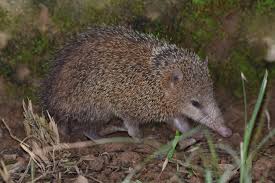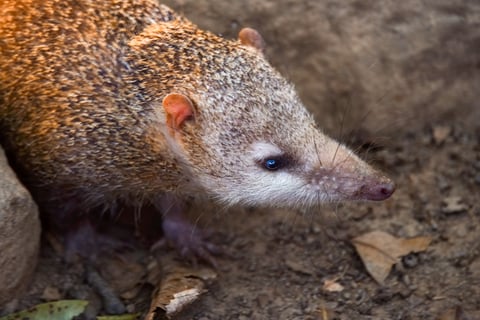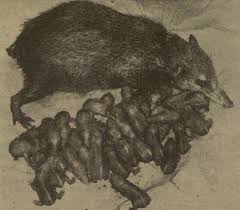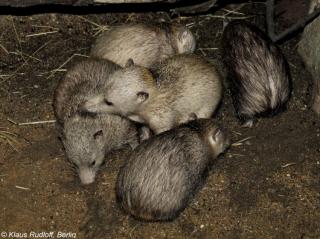Centetes Ecaudatus: The Remarkable Tailless Tenrec
Discover the fascinating world of Centetes ecaudatus, the tailless tenrec, a unique mammal from Madagascar known for its extraordinary reproductive abilities and diverse appearance. Learn about its survival strategies in the island's challenging environment and its nocturnal habits.
BLOGS-RATHBIOTACLAN
Centetes ecaudatus:
The Tailless Tenrec and Its Wonderful Reproductive Capacities
Centetes ecaudatus, or the tailless tenrec or common tenrec, is one of the most peculiar mammals native to the island of Madagascar. The unique members of family Tenrecidae prove rather disparate in look, ranging from hedgehogs to shrews and even to otters, as their ancestry is obviously not connected. This makes the tailless tenrec highly remarkable in the fact that it can produce an exceptionally huge number of offspring in one reproductive event, a strategy that helps it survive the tough environments of Madagascar.
Background on the Tailless Tenrec
The tailless tenrec is a rather small, nocturnal mammal weighing about 1 kilogram and measuring in the range of 25 to 40 centimeters. Tenrecs do not regulate their body temperature as well as other mammals, so they are somehow different in thermoregulation. This adaptation allows tenrecs to survive in the varying climates of Madagascar, from such humid rainforests to drier, more arid regions.
ADVERTISEMENTS
ADVERTISEMENTS


Even though the tailless tenrec is known to be a burrower and eats insects, what makes it unique is its reproductive success. The species reproduces by the mode known as "r-selected reproduction," in which many offspring are produced to ensure a reasonable number reach maturity.
Reproduction Cycle of Centetes ecaudatus
One of the most striking features of the tailless tenrec is its reproductive cycle. In particular, some species have evolved litters that are massive; for example, the common tenrec of sub-Saharan Africa is the mammal known to produce the highest number of offspring in a single litter - up to 32 young, though a female averages her lifetime with about 15 to 20 offspring per litter.
Tailless tenrecs breed during the rainy season in Madagascar when food is plentiful, and the female becomes estrus and mates with a male during competitive ways of mating to enhance reproductive success. After mating by a female tenrec, the gestation is from 55 to 60 days with a large litter, born by the female, which buries or nests in a hidden place.
Newborns are small tenrecs with their eyes closed and having no hair at all, totally dependent on their mothers for nutrition and protection. Female tenrecs have an impressive number of mammary glands as many as 24, permitting the mother to nurse a huge brood. Young tenrecs grow fast and, in just a few weeks, become independent. By five to six weeks of age, they are weaned and start venturing out.


High Reproductive Output: An Adaptive Gadget
The high number of offspring that the tailless tenrec needs to survive is because of the highly unpredictable environment in Madagascar. Most small mammals are preyed upon by greater animals, such as birds of prey, snakes, and even humans, for that matter. Besides the hardships that the young of the tailless tenrec will encounter, not least in reference to unforgiving environmental conditions in conjunction with hunger in the dry season.
High reproductive potential means that the female tenrec can enhance her likelihood of at least some of the offspring surviving the threats facing them and getting to reach maturity. Reproductive strategy where juvenile mortality is high, as in the case of tailless tenrecs, is termed "bet-hedging." Hence, the animal maximizes the chance of its genes getting transferred to future generations by playing quality over quantity.


Challenges and Conservation
Although it has yet to be listed as endangered, Centetes ecaudatus remains under constant threat owing to the threat of perpetual human influence in Madagascar due to deforestation. The unique biodiversity on the island, which hosts several endemic species, among them the tailless tenrec, is very sensitive to habitat degradation. Protection of ecosystems in Madagascar is, therefore, one of the key conservation measures that will ensure long-term survival of species like the common tenrec.
Besides, the reproductive strategy of the tenrec makes them somewhat in a position of resistance against most natural threats; however, this doesn't make them immune to the effects of habitat loss and climate change. They rely solely on the rainy season for proper reproduction, meaning shifts in weather patterns would significantly impact the populations.


ADVERTISEMENTS
ADVERTISEMENTS
Conclusion
This tailless tenrec is one of the finest examples of the powers of nature's diversity and plasticity. One litter can contain as many as 32 offspring, so it has a very high reproductive output very finely attuned to survival against the challenges of life in Madagascar. So, therefore, the more research that is conducted on this unique mammal, the more knowledge we have gained to date into the evolution strategy which enables animals to survive hostile and constantly changing environments.
Hence, protection of the tailless tenrec and its habitat is a task of not only protecting special wildlife in this region but also of understanding the intricate balance of life in one of the world's most biologically diverse places.
Engage with Us:
Stay tuned for more captivating insights and News. Visit our Blogs , Science paper , Study Portal and Follow Us on social media to never miss an update. Together, let's unravel the mysteries of the natural world.
